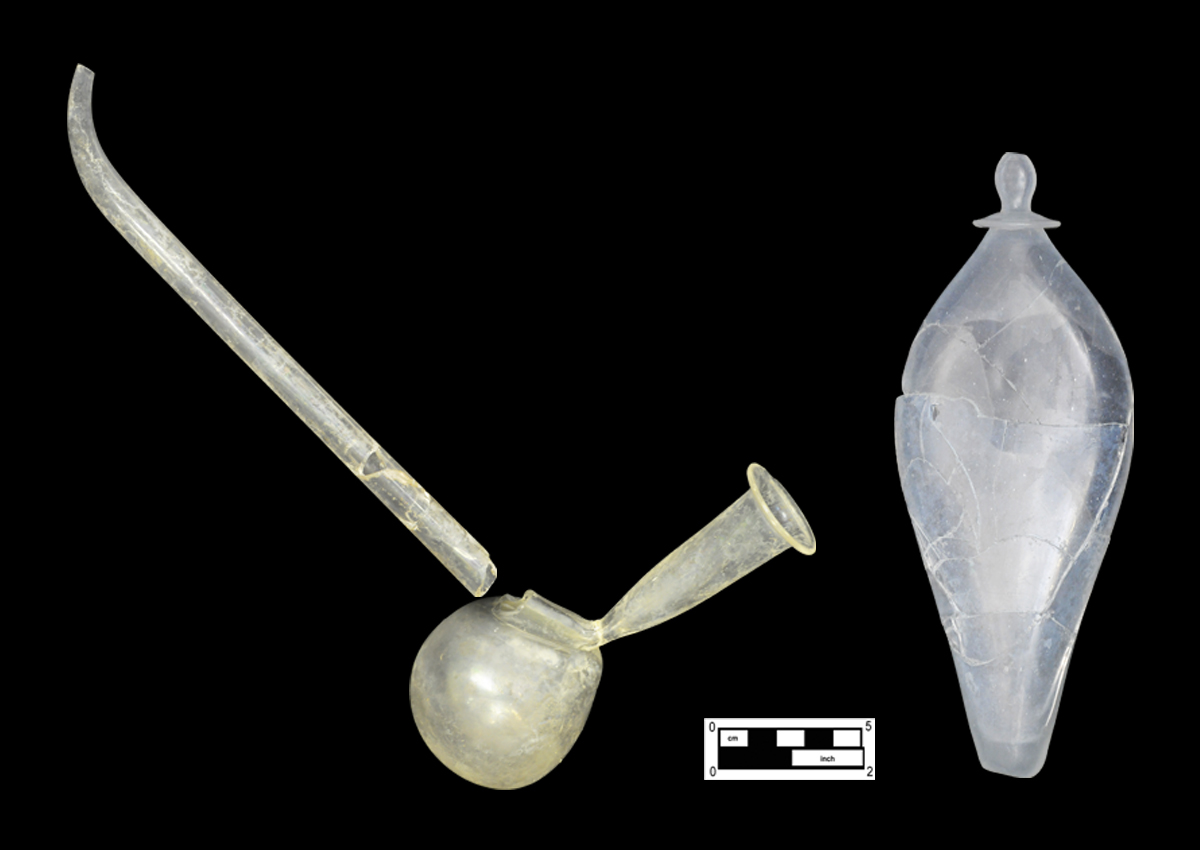August 2013 — Artifact of the Month
Back to PAF HOME…
Artifact of the Month Index….
SYMBOLS OF MOTHERHOOD: BREAST PIPE AND NURSING BOTTLE

Early to mid 19th century Breast pipe approximately 12” length (left).
Nursing bottle (right) measures 8.75” x 3.4” across at widest point.
These two glass objects were recovered during the excavations of a brick shaft feature (privy) along I-95 in the Fishtown section of Philadelphia. The glass breast pipe (left) is an early form of breast pump. The short flared end was positioned over the nipple so that the woman could place the tip of the glass pipe in her mouth. As she drew in on the pipe, air was pulled from the system and breast milk was collected in the round glass reservoir. Sometimes referred to as a sucking glass, this device was recommended to reduce engorgement due to incomplete emptying of the breast.
The use of a glass implement for evacuating breast milk is documented and published as early as the year 1577 by Omniboni Ferrarii. An illustration in this publication shows a small globe shaped glass container slightly widened at the lip with a long glass pipe attached near the base of the vessel. A sales catalog for McGee Brothers glass manufacturers of Pittsburgh, Pennsylvania dating to 1859/1860 shows little change in form from the illustration made in 1577. The breast pipe uncovered during the excavations along I-95 differs from these illustrations in that the short section of the pipe is elongated and somewhat resembles the socket of a candlestick.
The flask-shaped bottle on the right is a nursing bottle or infant feeder. Milk was poured into the bottle through a round opening on the side of the vessel (missing on this example). The bottle mouth opening was usually reinforced with a raised ring of glass and could be sealed with a cork during feeding. While breastfeeding was recommended as the best nourishment for infants, circumstances sometimes made it necessary to hand feed. Early feeders were made of horn or pewter with nipples formed of sponge or fabric wrapped in leather. By the early 19th century century English potteries were manufacturing ceramic bottles similar in shape to this excavated glass example. Glass infant feeders became popular during this time period because they were easier to clean.
Although the shape of this glass feeder is similar to ceramic bottles produced in England, its hand formed glass nipple is unique. The glass nipple appears large enough, and the small opening at the tip was ground smooth, suggesting that it was intended for placement directly in a child’s mouth. It is also possible that the glass nipple provided a form over which a softer material was secured.
Period newspapers show that both of these items were among the products manufactured by several local glassworks. In 1820, Dr. Thomas W. Dyott, the sole agent for the Olive and Gloucester Glassworks (New Jersey) and the Kensington Glassworks (Philadelphia), was selling breast pipes and nursing bottles. Union Glassworks, also located in Philadelphia, offered both of these items in an advertisement from 1828.
Contributed by archaeologist Rebecca White of URS Corporation, Burlington, New Jersey.
by admin